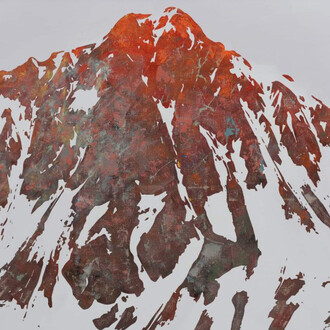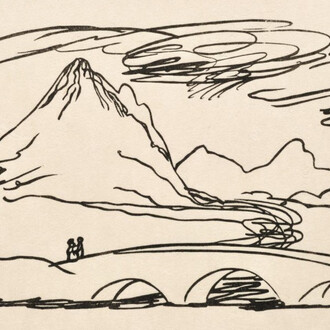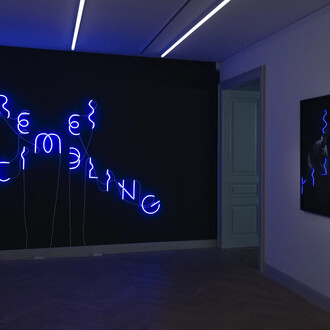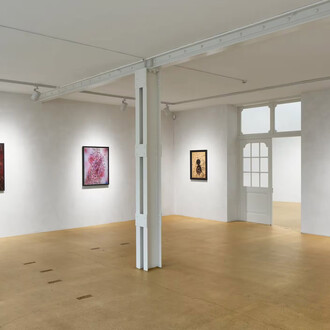The exhibition dedicated to the theme of women’s portraiture featuring woodcuts and a painting by Franz Gertsch from various phases of the artist’s career will be presented in Rooms 1 and 2 as well as the Cabinet.
‘Johanna I’ (1983/84) is the penultimate work in a series of women’s portraits from the 1980s that followed upon a self-portrait of the artist. The sitter is the then circa 20-year-old daughter of a now deceased Viennese publisher, editor and art collector. Franz Gertsch is at the height of his photorealistic phase here. The silhouette of the delicately made-up young woman with light brown hair appears against a neutral background. Johanna looks somewhat provocatively at the viewer. The perfection of her beauty and that of the picture’s painterly execution creates a feeling of remoteness and aloofness. He subsequently painted ‘Johanna II’ (1985), which is now in the Hess Collection in Napa, California. The artist saw himself confronted with a problem after completing these masterpieces. The precision of the execution and the breathtaking impact these works have both from close up and from a distance could not be surpassed. Franz Gertsch ventured a step in the direction of a new means of artistic expression: He gave up painting for almost ten years and devoted himself to the woodcut.
In the mid 1980s he developed his own type of large-format coloured woodcut that differed from his early ventures in this technique in several essential points. While he retained this technique’s classic black linearity in his first woodcuts and worked with a system of black contours, the later woodcuts are characterized by a system of so-called ‘light points’ – the depiction of the motif results from the interaction of the print’s bright spots. The artist worked on several blocks for a subject at the start of this phase and then printed the different motif and colour blocks over each other. This can be seen in ‘Natascha IV’ (1987/88) and ‘Silvia’ (2001/02). In the case of other woodcuts, for example ‘Dominique’ (1988), he printed with one block and only one colour.
The models for the portrait woodcuts, Dominique, Doris, Natascha and Silvia, were young women in their early 20s from Franz Gertsch’s surroundings and circle of acquaintances.
With ‘Maria’ (2001/02), the Museum Franz Gertsch shows a woman near water, too; the photograph after which this reclining nude of the artist’s wife was modelled was taken at the beach on Guadeloupe. It concerns a woodcut in which the elements of a portrait of a woman and landscape come together for the first time in Franz Gertsch’s oeuvre. Heaven and Earth, sun and sand unite with the sunlit body.












